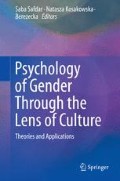Abstract
Laws introduced in South Asia banning the exchange of a bride price in arranged marriages led to a rise in implicit dowries, with marriage partners giving the dowry being maltreated and abandoned. Current bride shortages in South Asia are contributing to more families seeking partners for their sons from North America. This multiple case study investigated dowry manifestations and the relationship between gender and dowry-related victimization through interviews with 30 South Asian Canadians who were abandoned by their partners after having international arranged marriages, and focus groups with 27 cultural insiders. Women were vulnerable to unique dowry-related abuse combined with marriages for immigration, whereas men were vulnerable to dowry fraud. Implications for public education and community policing are discussed.
This research was funded by a Social Sciences and Humanities Research Council of Canada Metropolis Grant from the Prairie Metropolis Centre of Excellence for Research on Immigration, Integration, and Diversity.
Access this chapter
Tax calculation will be finalised at checkout
Purchases are for personal use only
References
Assanand, S., Dias, M., Richardson, E., & Waxler-Morrison, N. (1990). The South Asians. In N. Waxler-Morrison, J. Anderson, & E. Richardson (Eds.), Cross-cultural caring: A handbook for health professionals (pp. 141–180). Vancouver: UBC Press.
Bhopal, K. (1997). South Asian women within households: Dowries, degradation, and despair. Women’s Studies International Forum, 20(4), 483–492.
Bhopal, K. (1999). South Asian women and arranged marriages in East London. In R. Barot, H. Bradley, & S. Fenton (Eds.), Ethnicity, gender, and social change (pp. 117–134). New York: St. Martin’s.
Breakthrough Organization (2008). Bell bajao: Bring domestic violence to a halt. http://www.bellbajao.org/home/about/. Accessed 15 Jan 2014.
Citizenship and Immigration Canada. (2012a). Facts and figs. 2012: Immigration overview. http://www.cic.gc.ca/english/resources/statistics/facts2012/permanent/03.asp. Accessed 7 Dec 2013.
Citizenship and Immigration Canada. (2012b). News release—Minister Kenney introduces sponsorship restriction to address marriage fraud & regulatory impact analysis statement. Toronto: March 2nd, 2012 Press Conference Materials.
Gaulin, S. J. C., & Boster, J. S. (1990). Dowry as female competition. American Anthropologist, 92(4), 994–1005.
Heise, L. L. (1998). Violence against women: An integrated ecological framework. Violence Against Women, 4, 262–290.
Kumar, N., & Srivastava, L. (2005). Immigration and arranged marriages. In G. Das (Ed.), International arranged marriages (pp. 82–112). Calgary: Friesen.
Kwak, K., & Berry, J. W. (2001). Generational differences in acculturation among Asian families in Canada: A comparison of Vietnamese, Korean, and East-Indian groups. International Journal of Psychology, 36(3), 152–162.
Larson, M. L. (1984). Meaning-based translation: A guide to cross-language equivalence. Lanham: University Press of America.
Leslie, J. (1998). Dowry, ‘dowry deaths’ and violence against women. A journey of discovery. In W. Menski (Ed.), South Asians and the dowry problem (pp. 21–36). Staffordshire: Trentham.
Levesque, R. J. R. (2001). Culture and family violence: Fostering change through human rights law. Washington, DC: American Psychological Association.
Madathil, J., & Benshoff, J. M. (2008). Importance of marital characteristics and marital satisfaction: A comparison of Asian Indians in arranged marriages and Americans in marriages of choice. The Family Journal: Counseling and Therapy for Couples and Families, 16, 222–230.
Menski, W. (1998). Legal strategies for curbing the dowry problem. In W. Menski (Ed.), South Asians and the dowry problem (pp. 97–124). Staffordshire: Trentham.
Michalski, J. H. (2004). Making sociological sense out of trends in intimate partner violence: The social structure of violence against women. Violence Against Women, 10, 652–675.
Qureshi, R. B. (1991). Marriage strategies among Muslims from South Asia. The American Journal of Islamic Social Sciences, 10(3), 10–14.
Raj, A., & Silverman, J. (2002). Violence against immigrant women: The roles of culture, context, and legal immigrant status on intimate partner violence. Violence Against Women, 8, 367–398.
Rastogi, M., & Therly, P. (2006). Dowry and its link to violence against women in India: Feminist psychological perspectives. Trauma, Violence, & Abuse, 7, 66–77.
Rosenwald, G. C. (1988). A theory of multiple-case research. Journal of Personality, 56, 239–264.
Smith, J. A., Flowers, P., & Osborn, M. (1997). Interpretive phenomenological analysis and health psychology. In L. Yardley (Ed.), Material discourses and health (pp. 68–91). London: Routledge.
Sokoloff, N. J., & Dupont, I. (2005). Domestic violence at the intersections of race, class, and gender. Violence Against Women, 11, 38–64.
Statistics Canada (2006). Canada’s ethnocultural mosaic. http://cansim2.statcan.ca/cgi-win/cnsmcgi.pgm?Lang=E&SP_Action=Theme&SP_ID=30000. Accessed 7 May 2008.
Stopes-Roe, M., & Cochrane, R. (1990). Citizens of this country: The Asian British. Clevedon: Multilingual Matters.
Tran, K., Kaddatz, J., & Allard, P. (2005). South Asians in Canada: Unity through diversity. Canadian Social Trends, 78, 20–25, Autumn 2005.
United Nations Population Fund. (2007). Characteristics of sex-ratio imbalance in India and future scenarios. Hyderabad: Author.
World Bank. (2012). World Development Report 2102—Gender and Equality and Development. Washington, DC: Author.
Author information
Authors and Affiliations
Corresponding author
Editor information
Editors and Affiliations
Rights and permissions
Copyright information
© 2015 Springer International Publishing Switzerland
About this chapter
Cite this chapter
Merali, N. (2015). Money is the Root of All Evil: Modern-Day Dowries in South Asian International Arranged Marriages. In: Safdar, S., Kosakowska-Berezecka, N. (eds) Psychology of Gender Through the Lens of Culture. Springer, Cham. https://doi.org/10.1007/978-3-319-14005-6_3
Download citation
DOI: https://doi.org/10.1007/978-3-319-14005-6_3
Published:
Publisher Name: Springer, Cham
Print ISBN: 978-3-319-14004-9
Online ISBN: 978-3-319-14005-6
eBook Packages: Behavioral ScienceBehavioral Science and Psychology (R0)

